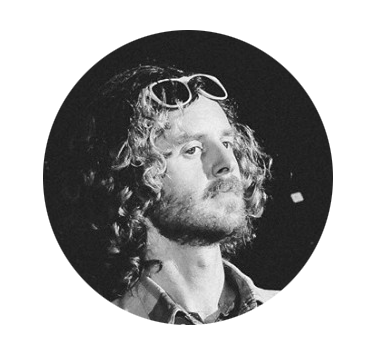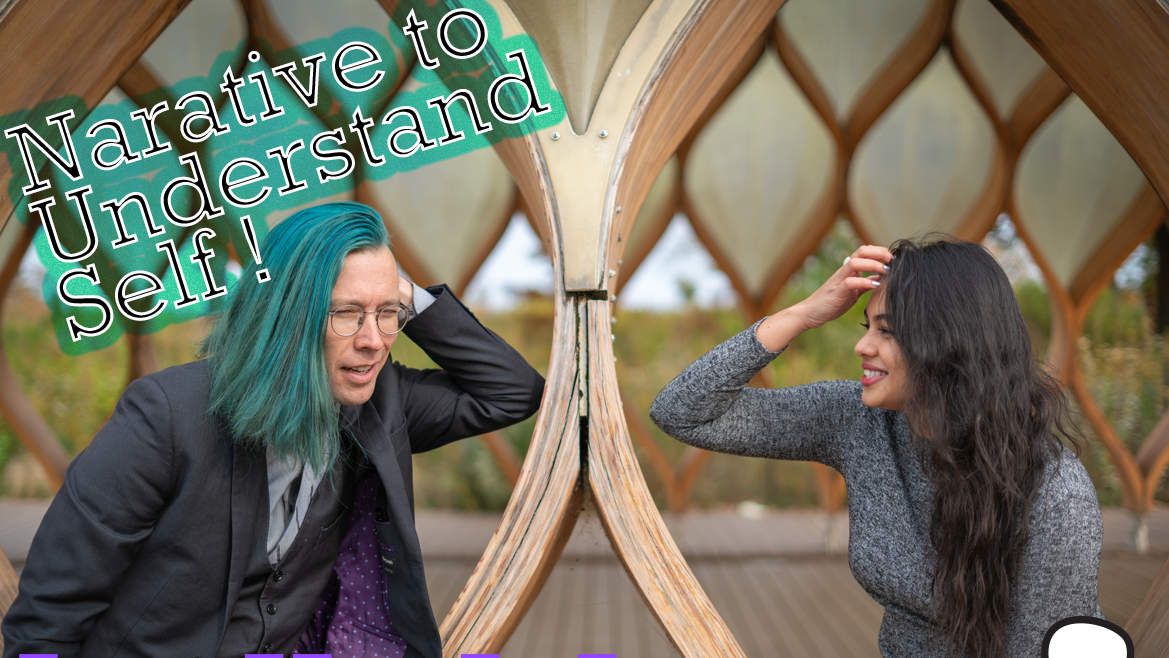The Storyteller as one man band.
One of the things that we like to emphasize is the importance of finding and building your unique voice in storytelling. We’ve talked about how different biases or perspectives can radically change a story. “Look how stupid my younger self was,” versus, “look how cool I was when I was a little kid,” are two very different takes on recounting the same chain of events.
Beyond choices of what perspectives and themes to emphasize, how we tell a story in the practical physical sense plays a huge role in expressing our voice.
I talked with Dan about the techniques he uses when he tells stories. Hopefully you’ll be able to find some useful takeaways. Let this conversation remind you to be mindful and to play with these techniques in your own performances.
A Cast of Characters in Interviewee and Interviewer.

Noah: How would you describe your storytelling voice?

Dan: There are two ways that I like to go about my stories; two voices that I’m particularly comfortable in. One is super colloquial:
I’ll get up on stage and I will be loose and talk to people exactly how I would talk to them if we were good friends. A lot of times what will happen is that there’ll be people that don’t even realize I have started a story – they just assume I’m doing a “Hi everybody” type of thing. Just super familiar and casual.
The other thing I like to do, what I call embodied storytelling, is more in line with that Narrator/Character dichotomy we’ve talked about. I don’t want to describe it as “theatrical” but there’s some theatrics to it.
N: What do you mean by “embodied storytelling?”
D: Basically what I try to do is I am reliving what’s happened. I try to place myself back in that story and will be seeing directly the moment that I’ve lived to the best of my ability.
I’m imagining – pretty vivid details – and I’m putting myself in that place. And I would say that that is my preferred method. I think it bridges the gap between the theatrical and storytelling because it ends up being a kind of performance that’s very emotive and physical while at the same time authentic and uncontrived.
N: What you’re describing reminds me of “Method Acting” where the actor tries to place themselves inside the character and draws on their own experience to embody that character more believably.

D: Exactly! People perceive and correctly interpret things like body language and micro expressions. When you enter those memories while you are telling a story your body is, in a real sense, reliving those events and reacting accordingly. Your body is going to do all those unconscious and involuntary things that are part of human communication. Your audience is going to pick up on that. Scientists have found that there are things like mirror neurons that activate both when we perform certain actions and when we perceive others performing them.
Let’s Talk About Zoom
N: So how does that translate online, for example a show on Zoom?
D: That’s a great question and Story Luck has been exploring and talking about performance on Zoom. Of course zoom is harder because, usually, there’s just much less bandwidth. That creates constraints. A lot of those subtle expressions and motions are going to be lost. But people are starting to figure it out as you see them try new things from performance to performance.
One stylistic choice I’ve noticed myself making is never standing up.
I don’t like it when people stand up on a zoom call. It seems unnatural and melodramatic. Unless I’m intentionally trying to be melodramatic, I remain seated.
I’m always trying to bridge that gap between being an actor and a storyteller. I want to use the things from theatrics, but have them be subtle enough that you’re not jolted out of the story.
So for example, if I’m nervous eighth grader Dan I’m a little twitchy. I might move a little bit away from the camera and become smaller. If I then switch over to embody the 8th grade bully that’s tormenting little Dan I might move a little closer to the camera. Maybe I lower my voice a little or talk a little more confidently.
N: That brings up dialogue and how to do multiple characters in your stories without getting bogged down or confusing the audience.
D: Yeah, dialogue and switching between characters can be tricky. If you depend on a lot of “He said/she said it starts to sound very literary and like you’re reading something rather than hearing someone tell a story.
What I try to do is make sure I’m keeping the characters to the minimum, I’m giving them their own voice with things like cadence and word choice. The embodied storytelling thing for me also counts for characters in the story that aren’t me. I’m trying to put myself in their shoes when I’m doing dialogue. Posture is a subtle thing you can play with to set your characters apart. Rather than put in a bunch of dialogue tags I try to let my audience see and hear the different characters so the dialogue flows more naturally.
N: What about doing “voices”. Is that a tool you use?
D: Because I am usually going to have multiple characters in my stories I do practice and have voices. I have a handful, which means basically four that I do. Those have my colloquial voice. I have my sort of stage presence voice. Then of course I have a bro voice. Which I can use for friends or dopey characters. Everyone should have a female voice.

N: What are some pitfalls of doing voices? I think there’s a lot more sensitivity over doing things respectfully and not being appropriative.
D: That’s a good point. There are times when half the audience is like, “Nobody sounds like that, especially not a woman!” And so I know I should probably cut that one out.
There’s so much you can do to differentiate your characters without depending on doing voices that you can easily; its easy to cut one if it’s not working.
We already hit all the body stuff and things you can think about. Usually the most important thing to convey is the dynamic between characters. That will differentiate them for the audience. In the example of a bully and his victim talking from before even, ignoring all the stuff we talked about before, just shifting your gaze so you’re looking down when you’re the bully and looking up when you’re the victim tells the audience who you are from moment to moment.
N: Great stuff! I’m not convincing when I try to do voices anyway so this is all good info. These are great tools to have available in your writerly/storytelling toolbox.
These posts adapted from the 20 minute lessons on story telling presented by Dan at the beginning of our Workshop! Workshop! show. Proceeds from links may lead to a commission being sent to the 501c3 Story Luck.


